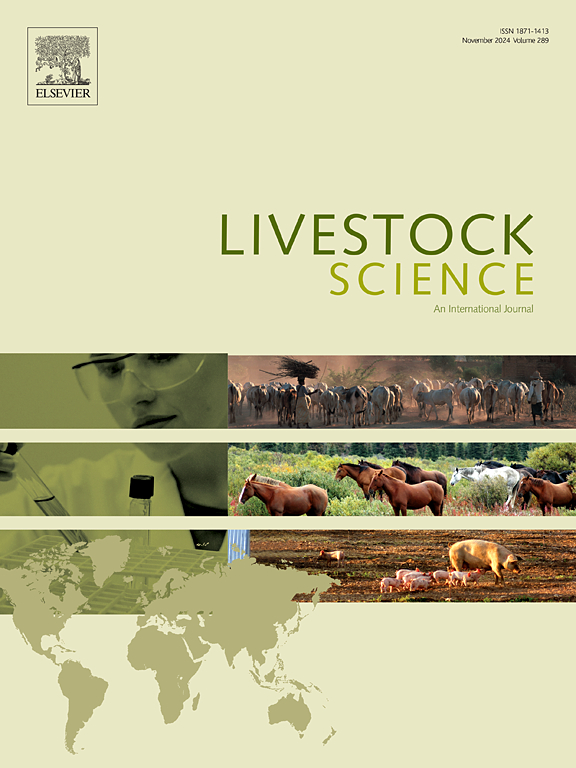The effect of neighbouring cows within the milking parlour on a cow's daily milk yield
IF 1.9
3区 农林科学
Q2 AGRICULTURE, DAIRY & ANIMAL SCIENCE
引用次数: 0
Abstract
Social interactions in a dairy herd are essential to maintain the herd's structure. Disturbances in social relationships can be stressful and may impact both animal welfare and production. Pathological and physiological changes, biological variations, but also the social environment induced by surrounding cows can affect variation in the daily milk production. This study aims to investigate the social interplay between cows during milking by examining the milking order in a milking parlour and determining if the individuals a cow stands next to will affect its daily milk yield. Milking order data from 234 individuals was collected from a two-sided herringbone parlour twice a day for 35 days. The indirect effect of the neighbour cows in the milking parlour was studied by fitting a linear mixed model to the daily milk yield residuals. The estimated indirect effects on milk yield ranged from -1.07 kg to 0.85 kg. We described a weak negative correlation of -0.26 (SE: 0.09) between direct and indirect effect estimates. The average of the indirect effects of neighbouring cows differed between different lactation stages and regrouped cows changed to a more negative estimated indirect effect in their new group. Our results show individual variation in the average indirect effect on the milk yield of the neighbour, with some individuals having a positive effect on their group mates, while others have a more negative effect. Further investigation of these effects would be helpful in selecting the best individuals in a herd and optimising group composition and milking routines.

挤奶室内邻近的奶牛对奶牛日产奶量的影响
在奶牛群体中,社会互动对维持群体结构至关重要。社会关系中的干扰可能会带来压力,并可能影响动物福利和生产。病理生理变化、生物变异,以及周围社会环境诱导的奶牛日产奶量的变化都可能受到影响。本研究旨在通过检查挤奶室的挤奶顺序来调查挤奶期间奶牛之间的社会相互作用,并确定奶牛站在旁边的个体是否会影响其每日产奶量。在35天的时间里,每天两次在一个双面人字形客厅收集234只奶牛的挤奶顺序数据。通过拟合日产奶量残差的线性混合模型,研究了挤奶室内相邻奶牛的间接影响。估计对产奶量的间接影响范围为-1.07公斤至0.85公斤。我们描述了直接效应和间接效应估计之间的弱负相关为-0.26 (SE: 0.09)。相邻奶牛的间接影响的平均值在不同的泌乳期之间有所不同,重新分组的奶牛在新的组中产生了更负面的间接影响。我们的研究结果显示,对邻居的产奶量的平均间接影响存在个体差异,有些个体对其群体同伴有积极影响,而其他个体则有更消极的影响。进一步研究这些影响将有助于在畜群中选择最佳个体,优化群体组成和挤奶程序。
本文章由计算机程序翻译,如有差异,请以英文原文为准。
求助全文
约1分钟内获得全文
求助全文
来源期刊

Livestock Science
农林科学-奶制品与动物科学
CiteScore
4.30
自引率
5.60%
发文量
237
审稿时长
3 months
期刊介绍:
Livestock Science promotes the sound development of the livestock sector by publishing original, peer-reviewed research and review articles covering all aspects of this broad field. The journal welcomes submissions on the avant-garde areas of animal genetics, breeding, growth, reproduction, nutrition, physiology, and behaviour in addition to genetic resources, welfare, ethics, health, management and production systems. The high-quality content of this journal reflects the truly international nature of this broad area of research.
 求助内容:
求助内容: 应助结果提醒方式:
应助结果提醒方式:


